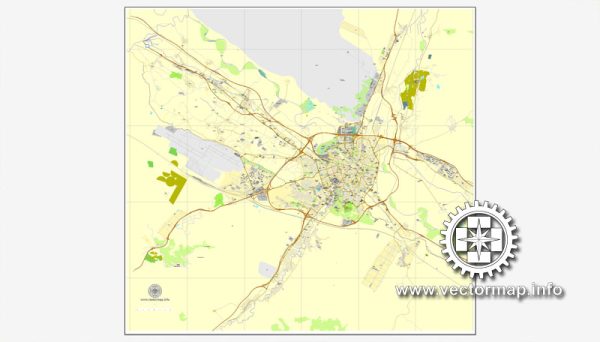Zaragoza, located in northeastern Spain, has a rich history of urban development that spans over two millennia. The city’s strategic location along the Ebro River has contributed to its historical significance and its role as a crossroads for various cultures and civilizations. Here’s an overview of the history of urban development in Zaragoza:
- Roman Period (1st Century BC – 5th Century AD): Zaragoza, known as Caesaraugusta during Roman times, was founded by the Roman general and politician Publius Cornelius Scipio as a military outpost. It quickly grew into a significant urban center and became the capital of the Roman province of Hispania Citerior. The city boasted impressive Roman architecture, including a theater, an amphitheater, temples, and a forum. The remains of these structures can still be seen in the archaeological site of Caesaraugusta.
- Visigothic and Moorish Periods (5th Century – 11th Century): With the fall of the Roman Empire, Zaragoza went through a period of decline. In the 5th century, it became part of the Visigothic Kingdom. Later, in 714, the Moors captured the city. Under Moorish rule, Zaragoza flourished once again and became an important cultural and economic center. The Aljafería Palace, originally built as a fortress, dates back to this period and stands as a testament to Moorish architecture.
- Christian Reconquest and Medieval Period (11th Century – 15th Century): The Christians, led by King Alfonso I of Aragon, retook Zaragoza in 1118. The city experienced a Christian revival, and various churches, cathedrals, and palaces were constructed. The iconic Basilica-Cathedral of Our Lady of the Pillar, one of Zaragoza’s most important landmarks, began its construction in the 12th century and underwent subsequent expansions.
- Renaissance and Baroque Periods (16th Century – 18th Century): During the Renaissance and Baroque periods, Zaragoza continued to grow and witnessed the construction of many grand buildings. The La Seo Cathedral underwent renovations in a Mudejar and Gothic style, and the city’s historic center was further developed with elegant squares and palaces.
- 19th Century to Present: The 19th century brought industrialization to Zaragoza, leading to population growth and urban expansion. Modern infrastructure, such as railways and bridges, was developed. The city played a role in the Spanish Civil War in the 20th century, and its subsequent recovery saw further urban development and modernization.
Today, Zaragoza is a vibrant city that blends its rich history with modern amenities. Visitors can explore its historic sites, including the Aljafería Palace, the Basilica-Cathedral of Our Lady of the Pillar, and the remnants of Roman Caesaraugusta, while also enjoying the city’s contemporary architecture, parks, and cultural attractions.


 Author: Kirill Shrayber, Ph.D.
Author: Kirill Shrayber, Ph.D.